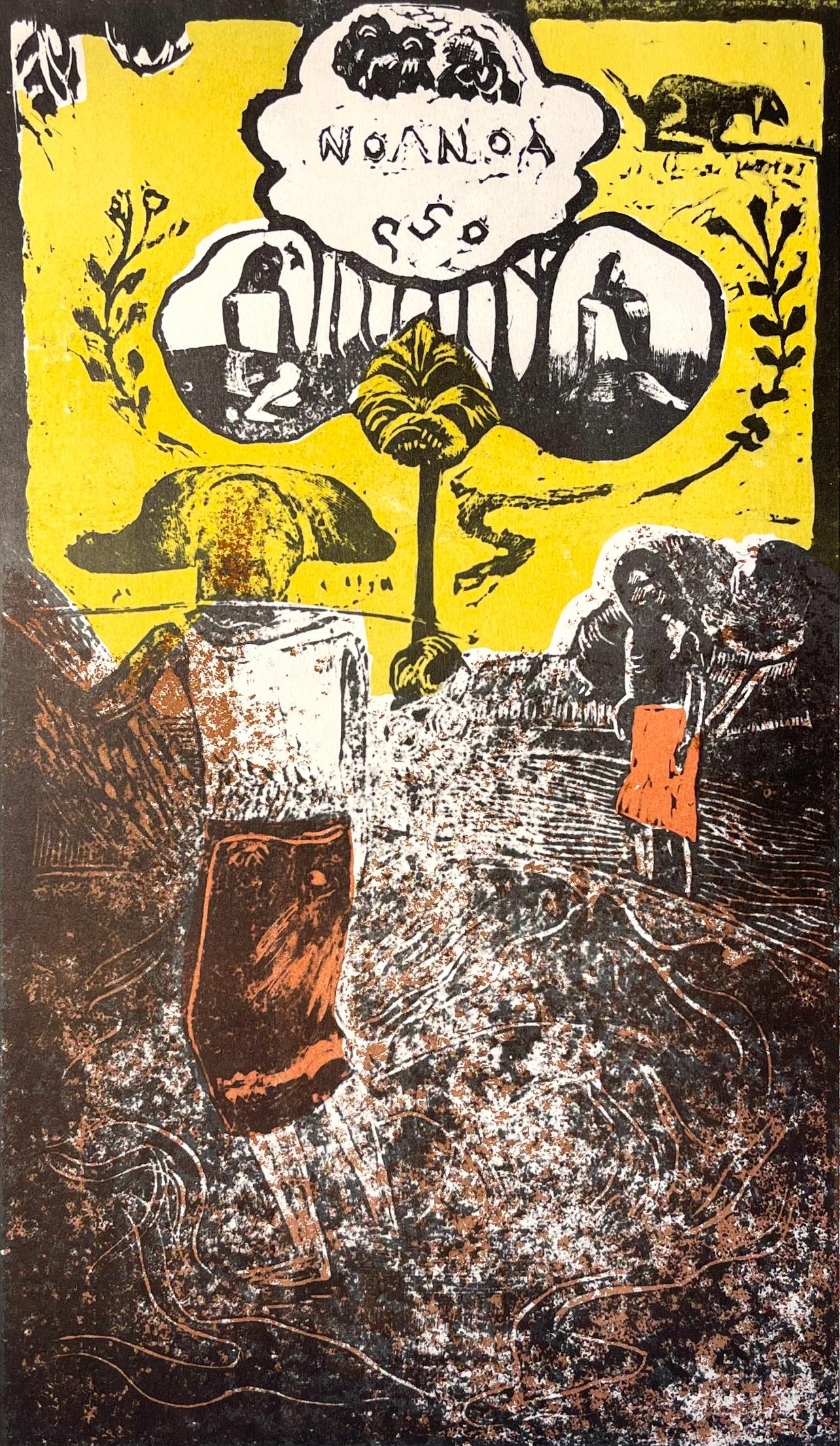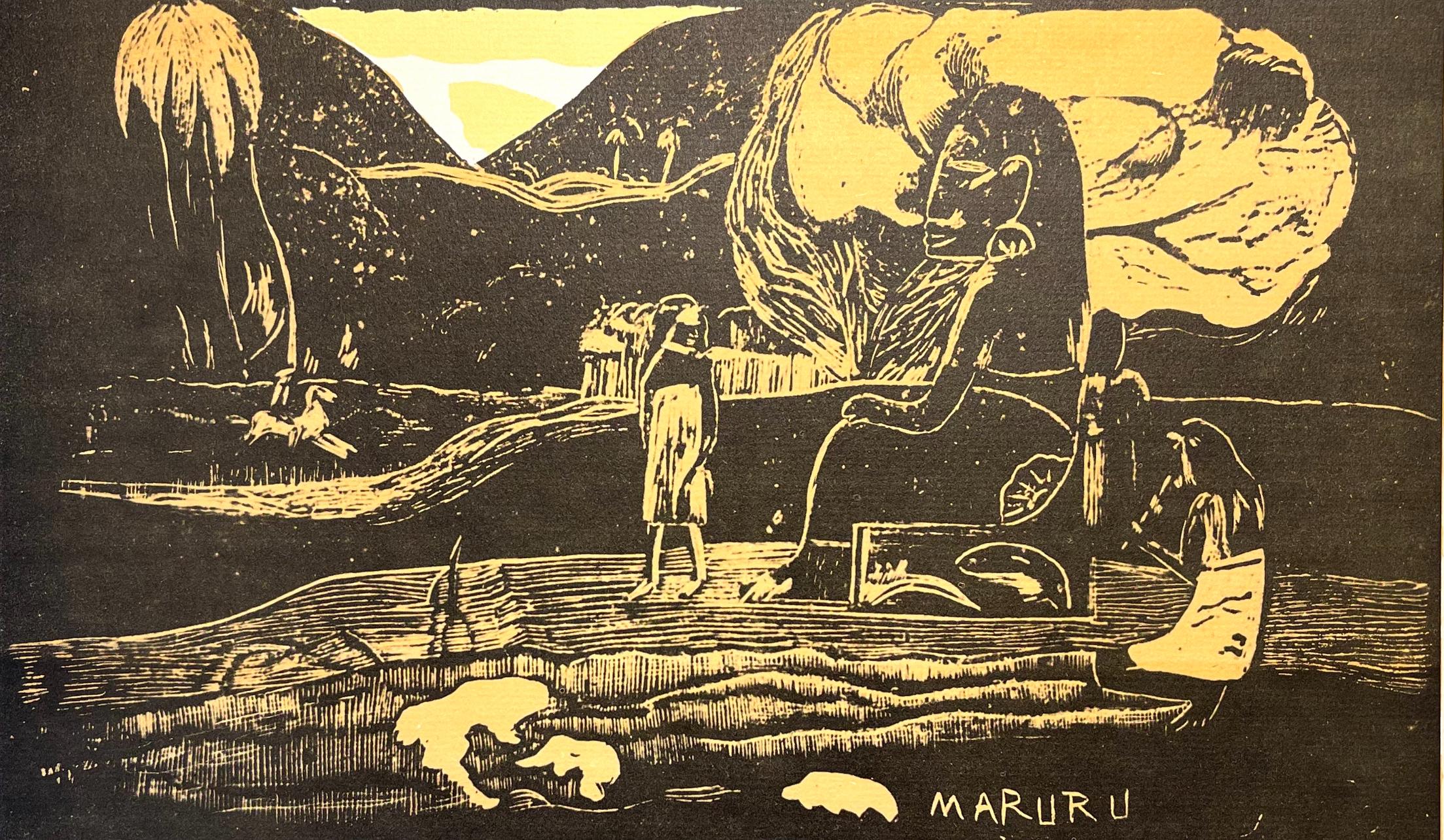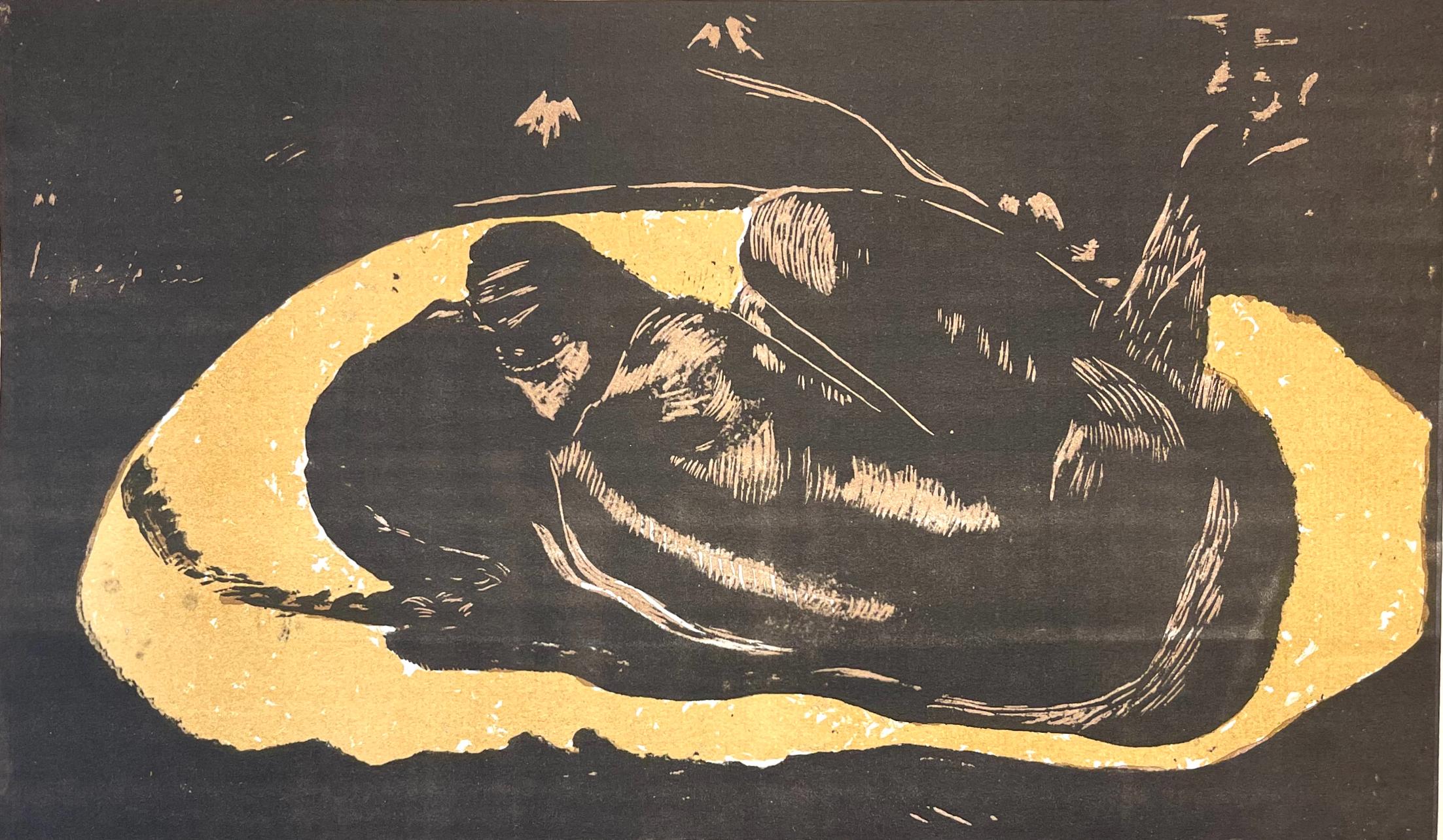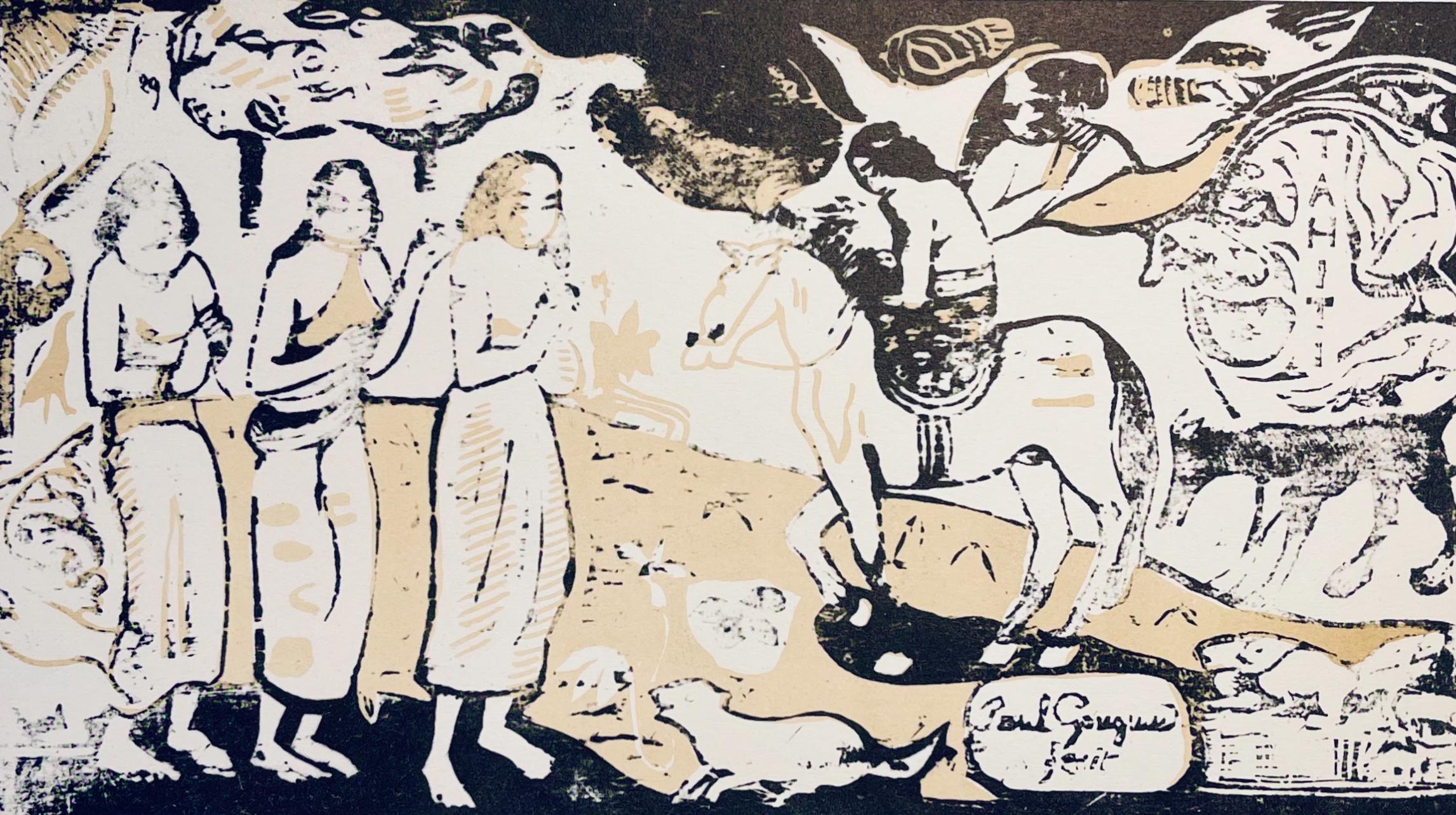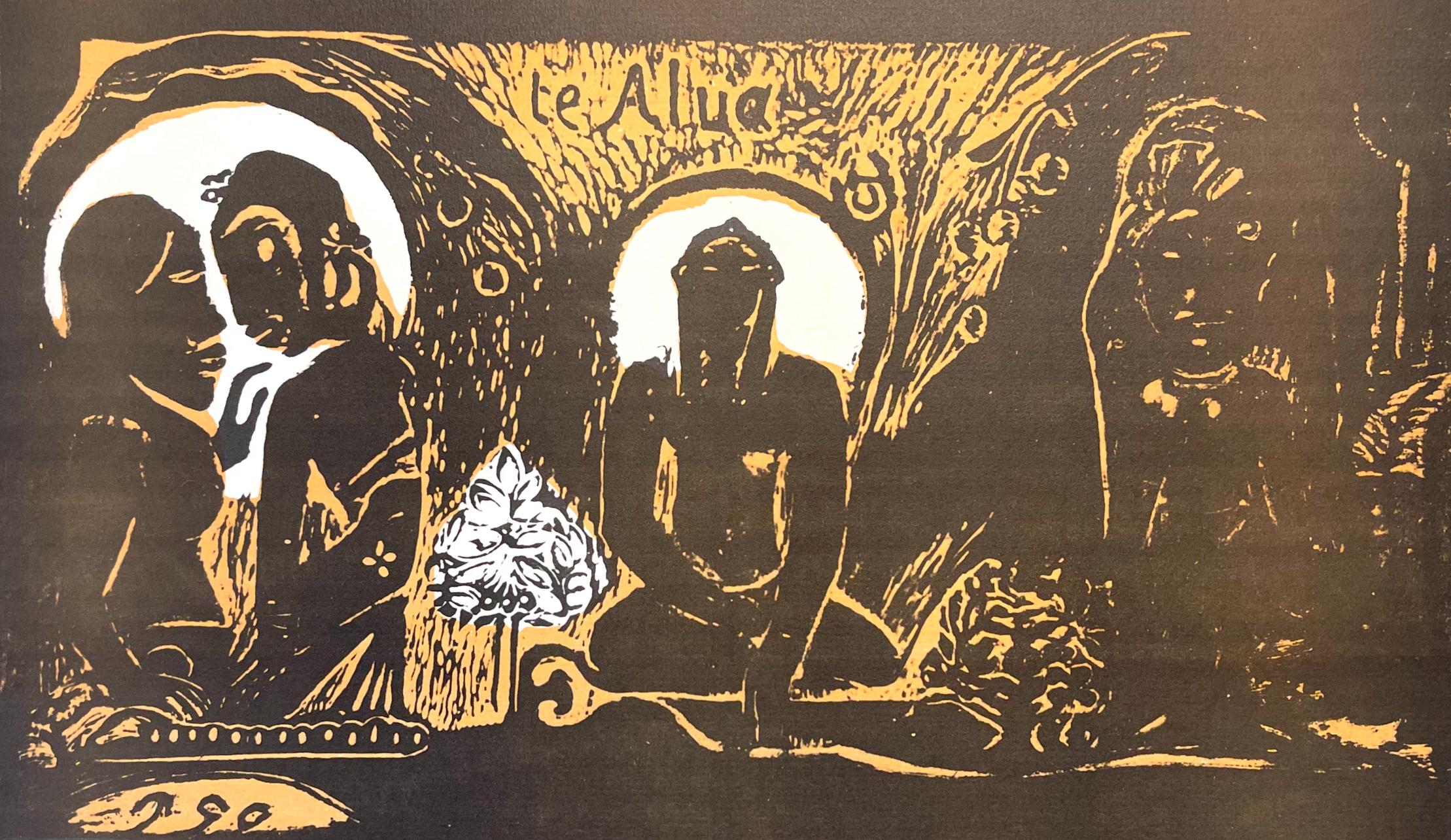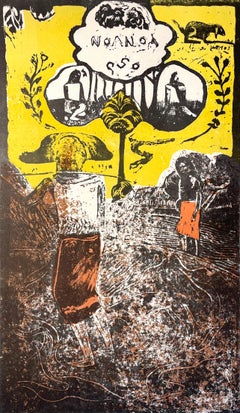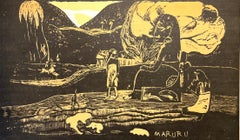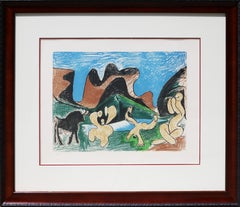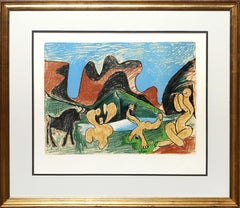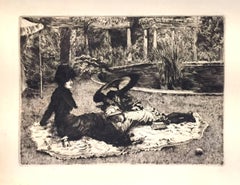Items Similar to Composition (Morane, N° 100), Les Petites Fleurs de St. Françoise, Émile Bernard
Want more images or videos?
Request additional images or videos from the seller
1 of 11
Émile BernardComposition (Morane, N° 100), Les Petites Fleurs de St. Françoise, Émile Bernard1928
1928
About the Item
Wood engraving on vergé d'Arches paper. Inscription: unsigned and unnumbered, as issued. Good condition. Notes: From the volume, Les Petites Fleurs de St. François, 1928. Published by Ambroise Vollard, éditeur, Paris; printed by l'imprimerie Féquet et Baudier, under the direction of Marthe Féquet, Paris, August 27, 1928. Excerpted from the volume (translated from French), The Little Flowers of Saint Francis was translated from Italian by Maurice Beau-Freton, illustrated with woods drawn and engraved by Émile Bernard, and published in M. CM. XXVIII, by Ambroise Vollard, 28, Rue de Martignac, 28, in Paris. Printing was finished in Paris, August 27, 1928, on Marthe Féquet's press. It was taken from this volume: CCCL examples numbered on vergé d'Arches. Examples I, II, and III were watercolored by the hand of Émile Bernard. XLV suites, on Japon blanc nacré, and the woodblocks destroyed. In addition, XXV Hors-commerce examples with brands from A to Y.
Catalogue raisonné references: Harscoet-Maire, L., Morane, D., Émile Bernard 1868-1941: catalogue raisonné de l'oeuvre gravé, 2000, N°. 100; Una E. Johnson Ambroise Vollard, éditeur. New York, 1944, cat. N°. 9; Mary Anne Stevens, Caroline Boyle-Turner, Roland Dorn, Christiaan Vogelaar Emile Bernard: 1868-1941, A Pioneer of Modern Art. Amsterdam, 1990, cat. N°. 156, p. 328.
ÉMILE HENRI BERNARD (1868–1941) was a French Post-Impressionist painter and writer, who had artistic friendships with Vincent van Gogh, Paul Gauguin and Eugène Boch, and at a later time, Paul Cézanne. Most of his notable work was accomplished at a young age, in the years 1886 through 1897. He is also associated with Cloisonnism and Synthetism, two late 19th-century art movements. Less known is Bernard's literary work, comprising plays, poetry, and art criticism as well as art historical statements that contain first-hand information on the crucial period of modern art to which Bernard had contributed.
- Creator:Émile Bernard (1868 - 1941, French)
- Creation Year:1928
- Dimensions:Height: 12.813 in (32.55 cm)Width: 9.813 in (24.93 cm)
- Medium:
- Movement & Style:
- Period:
- Condition:
- Gallery Location:Auburn Hills, MI
- Reference Number:1stDibs: LU1465214845572
About the Seller
4.9
Gold Seller
Premium sellers maintaining a 4.3+ rating and 24-hour response times
Established in 1978
1stDibs seller since 2021
1,064 sales on 1stDibs
Typical response time: <1 hour
- ShippingRetrieving quote...Shipping from: Auburn Hills, MI
- Return Policy
Authenticity Guarantee
In the unlikely event there’s an issue with an item’s authenticity, contact us within 1 year for a full refund. DetailsMoney-Back Guarantee
If your item is not as described, is damaged in transit, or does not arrive, contact us within 7 days for a full refund. Details24-Hour Cancellation
You have a 24-hour grace period in which to reconsider your purchase, with no questions asked.Vetted Professional Sellers
Our world-class sellers must adhere to strict standards for service and quality, maintaining the integrity of our listings.Price-Match Guarantee
If you find that a seller listed the same item for a lower price elsewhere, we’ll match it.Trusted Global Delivery
Our best-in-class carrier network provides specialized shipping options worldwide, including custom delivery.More From This Seller
View AllGauguin, Fragrant, Fragrant (Noa Noa), Gauguin (after)
By Paul Gauguin
Located in Auburn Hills, MI
Woodcut on vélin Utopian paper. Unsigned and unnumbered, as issued. Good Condition. Notes: From the folio, Gauguin, A portfolio of 12 color woodblocks, Paul Gauguin, French, 1848-1903 from the collection of the Museum Of Fine Arts, Boston, 1946. Rendered by Albert Carman (1899-1949); published the Museum Of Fine Arts, Boston and The Studio Publications, Inc., New York and London; printed by Holme Press Inc., New York, in an edition of MMMD. Excerpted from the folio, Paul Gauguin and Emil Bernard at Pont-Aven, Brittany, in 1888, each made a bas-relief, wooden panel to decorate a piece of furniture for a friend. In order to keep a record of their designs, a few inked impressions were made on paper. The illustration at left is a reproduction of a print which is possibly one of the above mentioned. It is further possible that this experiment later gave Gauguin the idea of making woodcuts. Just as his work in painting expressed a revolt against the overemphasis on factual representation of the nineteenth century in favor of decorative pattern and color, so also his woodcuts leaned strongly to the same side of the balance. Ten of the cuts reproduced (all excepting Soyez Amoureuses and Changement de Residence), which constitute the whole of his best known series, were made at Pont-Aven beginning in the fall of 1894, after Gauguin's return from his first trip to Tahiti and after he broke his ankle. They were at first roughly cut with a common carpenter's gouge, and the flat surfaces sandpapered and engraved with a sharp in-strument, perhaps an engraver's burin. A few trial proofs were printed in black ink only. Then the hollows were deepened with a woodcutter's gouge and highlights were added. An edition of thirty to fifty impressions of each subject, with the addition of color blocks (one, two or three), was made by Louis Roy...
Category
1940s Post-Impressionist Figurative Prints
Materials
Woodcut
Gauguin, Offerings of Gratitude (Maruru), Gauguin (after)
By Paul Gauguin
Located in Auburn Hills, MI
Woodcut on vélin Utopian paper. Unsigned and unnumbered, as issued. Good Condition. Notes: From the folio, Gauguin, A portfolio of 12 color woodblocks, Paul Gauguin, French, 1848-1903 from the collection of the Museum Of Fine Arts, Boston, 1946. Rendered by Albert Carman (1899-1949); published the Museum Of Fine Arts, Boston and The Studio Publications, Inc., New York and London; printed by Holme Press Inc., New York, in an edition of MMMD. Excerpted from the folio, Paul Gauguin and Emil Bernard at Pont-Aven, Brittany, in 1888, each made a bas-relief, wooden panel to decorate a piece of furniture for a friend. In order to keep a record of their designs, a few inked impressions were made on paper. The illustration at left is a reproduction of a print which is possibly one of the above mentioned. It is further possible that this experiment later gave Gauguin the idea of making woodcuts. Just as his work in painting expressed a revolt against the overemphasis on factual representation of the nineteenth century in favor of decorative pattern and color, so also his woodcuts leaned strongly to the same side of the balance. Ten of the cuts reproduced (all excepting Soyez Amoureuses and Changement de Residence), which constitute the whole of his best known series, were made at Pont-Aven beginning in the fall of 1894, after Gauguin's return from his first trip to Tahiti and after he broke his ankle. They were at first roughly cut with a common carpenter's gouge, and the flat surfaces sandpapered and engraved with a sharp in-strument, perhaps an engraver's burin. A few trial proofs were printed in black ink only. Then the hollows were deepened with a woodcutter's gouge and highlights were added. An edition of thirty to fifty impressions of each subject, with the addition of color blocks (one, two or three), was made by Louis Roy...
Category
1940s Post-Impressionist Figurative Prints
Materials
Woodcut
Gauguin, The Creation of the Universe (L'Univers est créé), Gauguin (after)
By Paul Gauguin
Located in Auburn Hills, MI
Woodcut on vélin Utopian paper. Unsigned and unnumbered, as issued. Good Condition. Notes: From the folio, Gauguin, A portfolio of 12 color woodblocks, Paul Gauguin, French, 1848-1903 from the collection of the Museum Of Fine Arts, Boston, 1946. Rendered by Albert Carman (1899-1949); published the Museum Of Fine Arts, Boston and The Studio Publications, Inc., New York and London; printed by Holme Press Inc., New York, in an edition of MMMD. Excerpted from the folio, Paul Gauguin and Emil Bernard at Pont-Aven, Brittany, in 1888, each made a bas-relief, wooden panel to decorate a piece of furniture for a friend. In order to keep a record of their designs, a few inked impressions were made on paper. The illustration at left is a reproduction of a print which is possibly one of the above mentioned. It is further possible that this experiment later gave Gauguin the idea of making woodcuts. Just as his work in painting expressed a revolt against the overemphasis on factual representation of the nineteenth century in favor of decorative pattern and color, so also his woodcuts leaned strongly to the same side of the balance. Ten of the cuts reproduced (all excepting Soyez Amoureuses and Changement de Residence), which constitute the whole of his best known series, were made at Pont-Aven beginning in the fall of 1894, after Gauguin's return from his first trip to Tahiti and after he broke his ankle. They were at first roughly cut with a common carpenter's gouge, and the flat surfaces sandpapered and engraved with a sharp in-strument, perhaps an engraver's burin. A few trial proofs were printed in black ink only. Then the hollows were deepened with a woodcutter's gouge and highlights were added. An edition of thirty to fifty impressions of each subject, with the addition of color blocks (one, two or three), was made by Louis Roy...
Category
1940s Post-Impressionist Figurative Prints
Materials
Woodcut
$716 Sale Price
20% Off
Free Shipping
Gauguin, Spirit of the Dead (Manaò tupapaú), Gauguin (after)
By Paul Gauguin
Located in Auburn Hills, MI
Woodcut on vélin Utopian paper. Unsigned and unnumbered, as issued. Good Condition. Notes: From the folio, Gauguin, A portfolio of 12 color woodblocks, Paul Gauguin, French, 1848-1903 from the collection of the Museum Of Fine Arts, Boston, 1946. Rendered by Albert Carman (1899-1949); published the Museum Of Fine Arts, Boston and The Studio Publications, Inc., New York and London; printed by Holme Press Inc., New York, in an edition of MMMD. Excerpted from the folio, Paul Gauguin and Emil Bernard at Pont-Aven, Brittany, in 1888, each made a bas-relief, wooden panel to decorate a piece of furniture for a friend. In order to keep a record of their designs, a few inked impressions were made on paper. The illustration at left is a reproduction of a print which is possibly one of the above mentioned. It is further possible that this experiment later gave Gauguin the idea of making woodcuts. Just as his work in painting expressed a revolt against the overemphasis on factual representation of the nineteenth century in favor of decorative pattern and color, so also his woodcuts leaned strongly to the same side of the balance. Ten of the cuts reproduced (all excepting Soyez Amoureuses and Changement de Residence), which constitute the whole of his best known series, were made at Pont-Aven beginning in the fall of 1894, after Gauguin's return from his first trip to Tahiti and after he broke his ankle. They were at first roughly cut with a common carpenter's gouge, and the flat surfaces sandpapered and engraved with a sharp in-strument, perhaps an engraver's burin. A few trial proofs were printed in black ink only. Then the hollows were deepened with a woodcutter's gouge and highlights were added. An edition of thirty to fifty impressions of each subject, with the addition of color blocks (one, two or three), was made by Louis Roy...
Category
1940s Post-Impressionist Figurative Prints
Materials
Woodcut
$716 Sale Price
20% Off
Free Shipping
Gauguin, Change of Residence (Changement de résidence), Gauguin (after)
By Paul Gauguin
Located in Auburn Hills, MI
Woodcut on vélin Utopian paper. Unsigned and unnumbered, as issued. Good Condition. Notes: From the folio, Gauguin, A portfolio of 12 color woodblocks, Paul Gauguin, French, 1848-1903 from the collection of the Museum Of Fine Arts, Boston, 1946. Rendered by Albert Carman (1899-1949); published the Museum Of Fine Arts, Boston and The Studio Publications, Inc., New York and London; printed by Holme Press Inc., New York, in an edition of MMMD. Excerpted from the folio, Paul Gauguin and Emil Bernard at Pont-Aven, Brittany, in 1888, each made a bas-relief, wooden panel to decorate a piece of furniture for a friend. In order to keep a record of their designs, a few inked impressions were made on paper. The illustration at left is a reproduction of a print which is possibly one of the above mentioned. It is further possible that this experiment later gave Gauguin the idea of making woodcuts. Just as his work in painting expressed a revolt against the overemphasis on factual representation of the nineteenth century in favor of decorative pattern and color, so also his woodcuts leaned strongly to the same side of the balance. Ten of the cuts reproduced (all excepting Soyez Amoureuses and Changement de Residence), which constitute the whole of his best known series, were made at Pont-Aven beginning in the fall of 1894, after Gauguin's return from his first trip to Tahiti and after he broke his ankle. They were at first roughly cut with a common carpenter's gouge, and the flat surfaces sandpapered and engraved with a sharp in-strument, perhaps an engraver's burin. A few trial proofs were printed in black ink only. Then the hollows were deepened with a woodcutter's gouge and highlights were added. An edition of thirty to fifty impressions of each subject, with the addition of color blocks (one, two or three), was made by Louis Roy...
Category
1940s Post-Impressionist Figurative Prints
Materials
Woodcut
$716 Sale Price
20% Off
Free Shipping
Gauguin, The God (Te atua), Gauguin (after)
By Paul Gauguin
Located in Auburn Hills, MI
Woodcut on vélin Utopian paper. Unsigned and unnumbered, as issued. Good Condition. Notes: From the folio, Gauguin, A portfolio of 12 color woodblocks, Paul Gauguin, French, 1848-19...
Category
1940s Post-Impressionist Figurative Prints
Materials
Woodcut
You May Also Like
Bacchanale, Cubist Lithograph after Pablo Picasso
By Pablo Picasso
Located in Long Island City, NY
A lithograph from the Marina Picasso Estate Collection after the Pablo Picasso painting "Bacchanale". The original painting was completed circa 1922. In the 1970's after Picasso's d...
Category
1980s Fauvist Figurative Prints
Materials
Lithograph
Bacchanale, Cubist Lithograph after Pablo Picasso
By Pablo Picasso
Located in Long Island City, NY
A lithograph from the Marina Picasso Estate Collection after the Pablo Picasso painting "Bacchanale". The original painting was completed circa 1922. In the 1970's after Picasso's d...
Category
1980s Fauvist Figurative Prints
Materials
Lithograph
On the Grass - Etching and Drypoint by J. Tissot - 1880
By James Tissot
Located in Roma, IT
Very fine print on verge crème.
Some small traces of oxidation, dust and some flowerings on external edges of sheet, otherwise excellent conditions.
Full margins.
Ref. Wentworth 50.
Category
1880s Post-Impressionist Landscape Prints
Materials
Drypoint, Etching
Murmures
By Jean-Pierre Cassigneul
Located in San Francisco, CA
This art work titled "Murmures" 1989 is an original color lithograph on wove paper by French artist, Jean Pierre Cassigneul, born 1935. It is hand signed and inscribed E.A (Artist Proof) in pencil by the artist. Referenced and pictured in the artist's catalogue raisonne by Mazo. plate #31. The image size is 23.80 x 30 inches, framed size is 39.25 x 44.5 inches. Custom framed in a wooden gold frame, with fabric matting and gold color spacer. It is in excellent condition.
About the artist:
Jean-Pierre Cassigneul is a French painter known for his serene portraits of women in hats that recall the French Post-Impressionist avant-garde, including the works of Pierre Bonnard and Edouard Vuillard. He was born on July 13, 1935, in Paris.
He studied at the École des Beaux-Arts in Paris and went on to exhibit in various group exhibitions, including the Salon d' Automne in Paris (of which he was member), the Salon de la Jeune Peinture, He exhibited at the Beaubourg Center in Paris in 1977 and solo as of 1952, on a regular basis in France but also in New York, and Tokyo and worldwide
Jean PierreCassigneul is known for his charming and extremely popular Van Dongen-influenced paintings of women in floral hats, complete with frequent allusions to other aspects of the Années Folles.
1952 First private exhibition at the Galerie Lucy Kroge in Paris aged 17.
1954 Enters into the Académie Charpentier and then decides to study under Jean Souverbie
at the Ecole des Beaux-Arts de Paris.
1955 He passes his entrance exam a year later and enrolls at the "Ecole Nationale Superieure"
des Beaux-Arts de Paris. Works in Chapelain-Midy’s studio.
1958 First exhibition at the Galerie des Beaux-Arts.
1959 Appointed member of the Salon d’Automne.
1956–1960 Instructed by the French painter Roger Chapelain-Midy.
1963 Present at the Salon de la Jeune Peinture for the first time.
1964 Private exhibition at the Galerie Tivey-Faucon, Paris.
Meets Kiyoshi Tamenaga, who becomes his art dealer for Japan.
1965 Creation of his first lithographic works.
Exhibition at the Galerie Bellechasse, Paris.
1966 Present at the International Exhibition of Figurative Art, Tokyo.
Exhibition at the Galerie Bellechasse, Paris.
1968 Exhibition at the Galerie Juarez in Palm Beach, USA.
Private exhibition at la Galerie Vital, Paris.
1969 Exhibition of lithographic works at the Mitsukoshi Gallery, Tokyo.
1970 January : Exhibition at the Wally Findlay Gallery, Palm Beach, then in New York.
First trip to Japan, where he stays for three months.
Important private exhibition at the Mitsukoshi Gallery, Tokyo.
1973 Exhibition at the Wally Findlay Gallery in Palm Beach, then in New York.
Private exhibition at the Tamenaga Gallery, Tokyo. Meets art publisher Alain Mazo.
1974 Private exhibition at the Galerie Wally Findlay, Paris, then in New York.
1975 Exhibition at the Wally Findlay Gallery, New York.
1976 Private exhibition at the Mitsukoshi Gallery, Tokyo.
Publication of the album “Parcs” by Editions Mazo-Paris.
1977 June : Private exhibition at the Galerie René Kieffer, Paris
Private show of paintings and pastels at the Galerie Wally Findlay, Paris.
1978 Retrospective exhibition of lithographic works at Vision Nouvelle.
June-July : Exhibition at the Wally Findlay Gallery, New York.
Important private showat the Mitsukoshi Gallery, Tokyo.
1980 Designs his first tapestry, executed by Atelier 3...
Category
Late 20th Century Post-Impressionist Figurative Prints
Materials
Lithograph
Fete Champetre
By Jean Dufy
Located in San Francisco, CA
This artwork titled "Fete Champetre" c.1950 is an original colors lithograph by renown artist Jean Dufy, 1888-1964. It is hand signed and numbered 80/220 in pencil by the artist. The...
Category
Mid-20th Century Fauvist Figurative Prints
Materials
Lithograph
Maison Natale de Colette - Lithograph by Luc-Albert Moreau - Early 20th Century
By Luc-Albert Moreau
Located in Roma, IT
Maison Natale de Colette is a Lithograph on ivory-colored paper realized by Luc Albert Moreau.
The artwork is in good condition.
Hand-signature on the lower right corner, numbered ...
Category
Early 20th Century Post-Impressionist Figurative Prints
Materials
Lithograph
